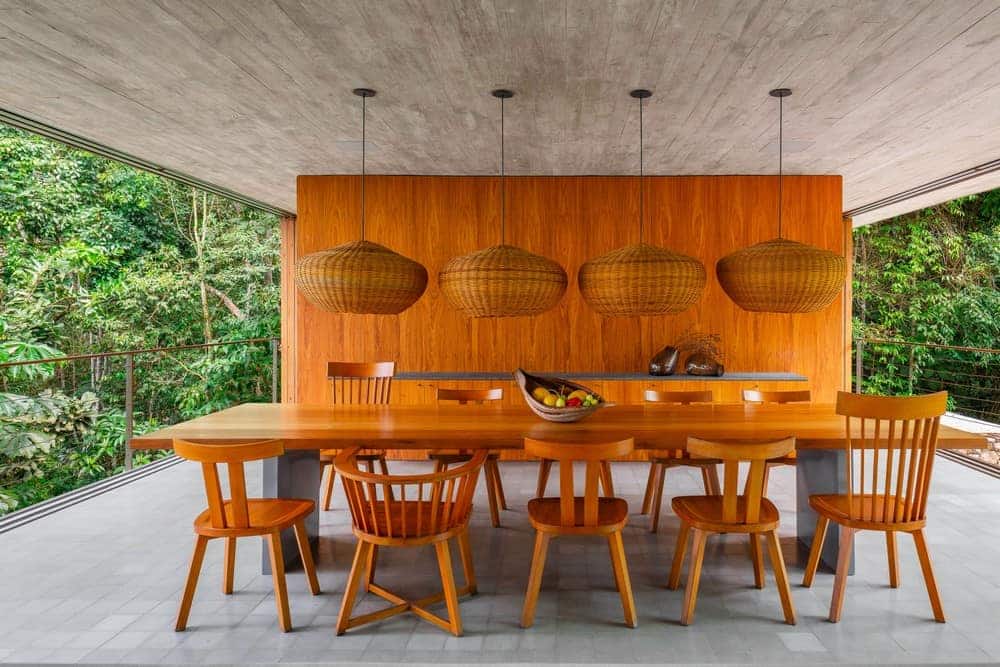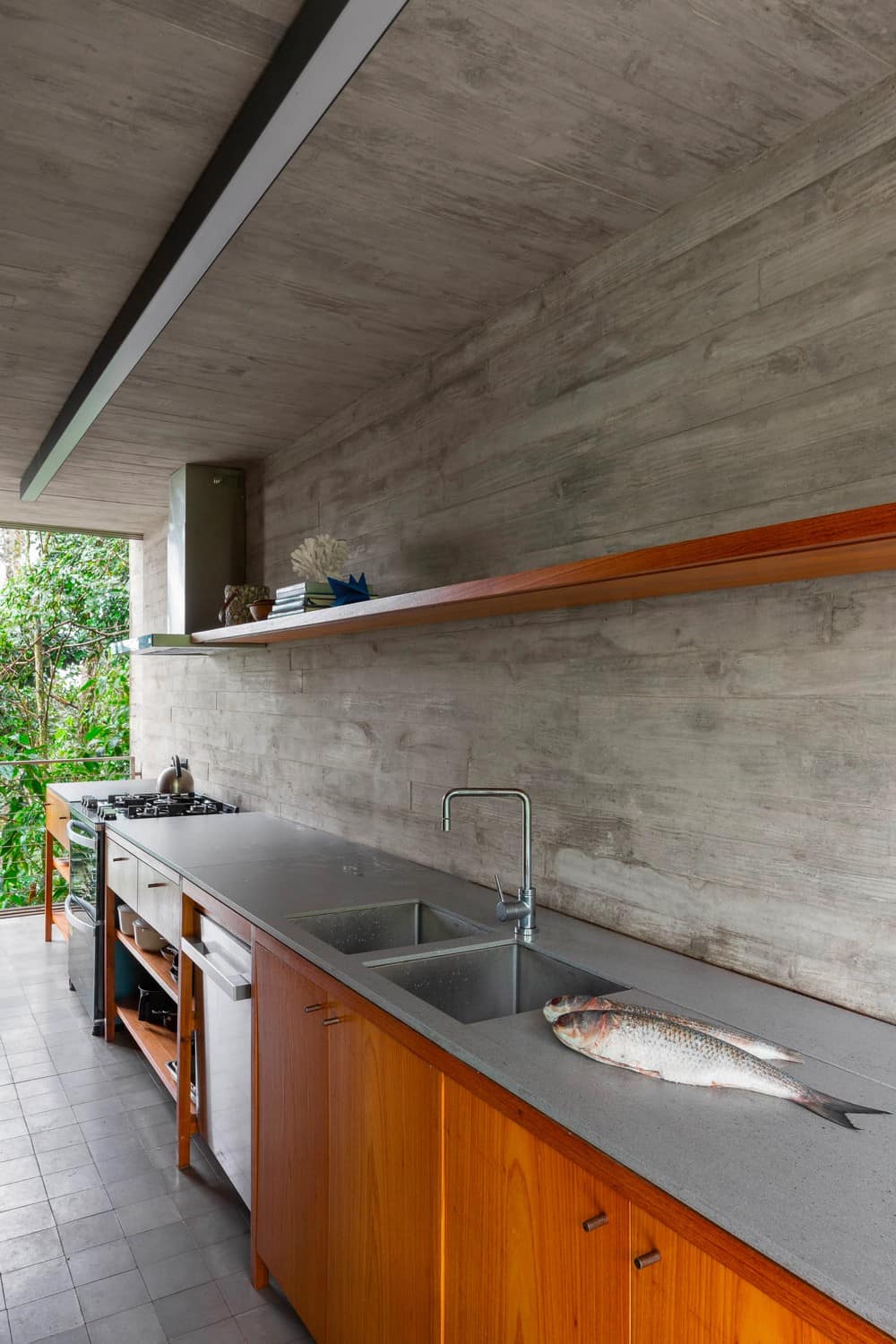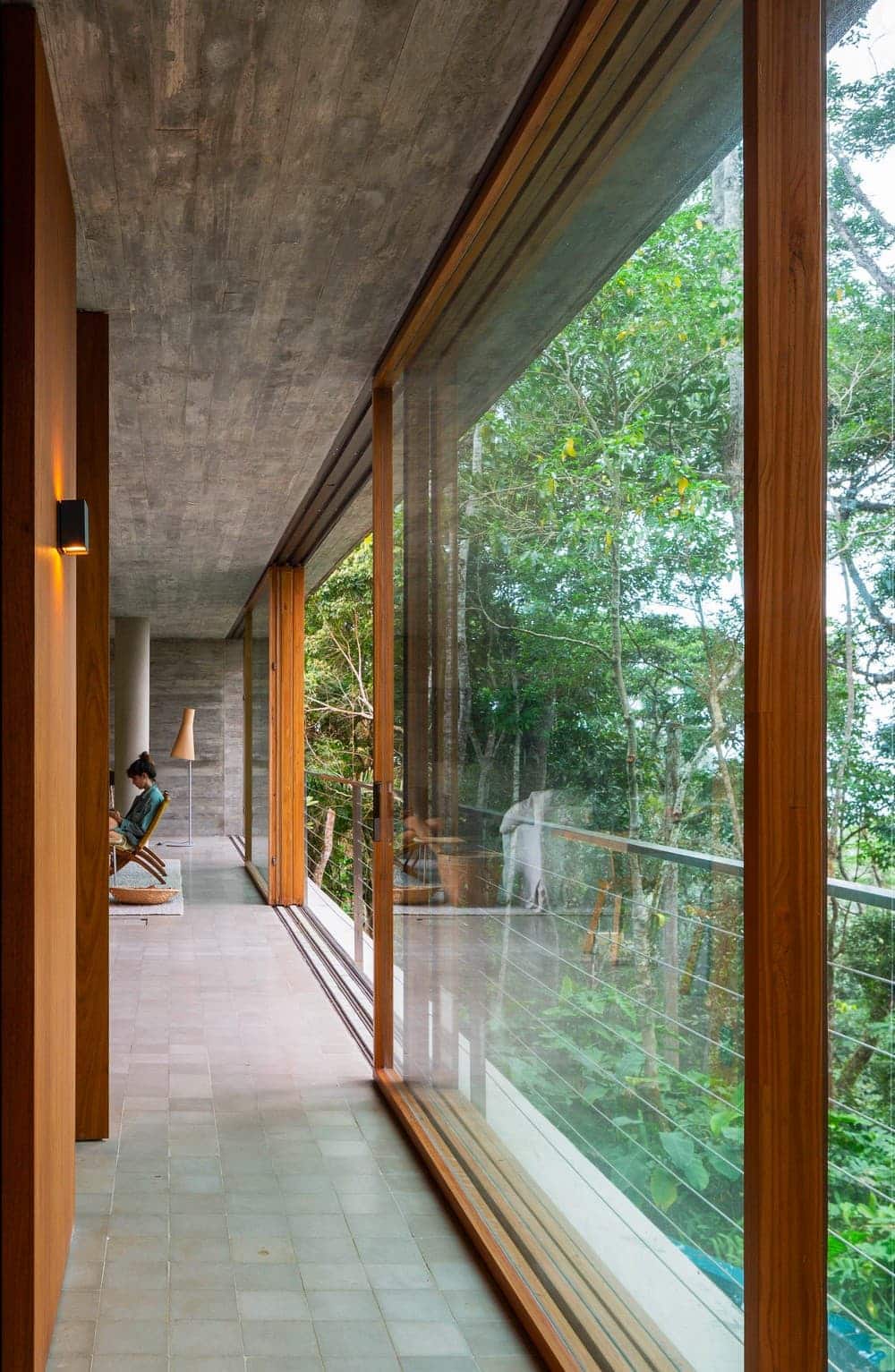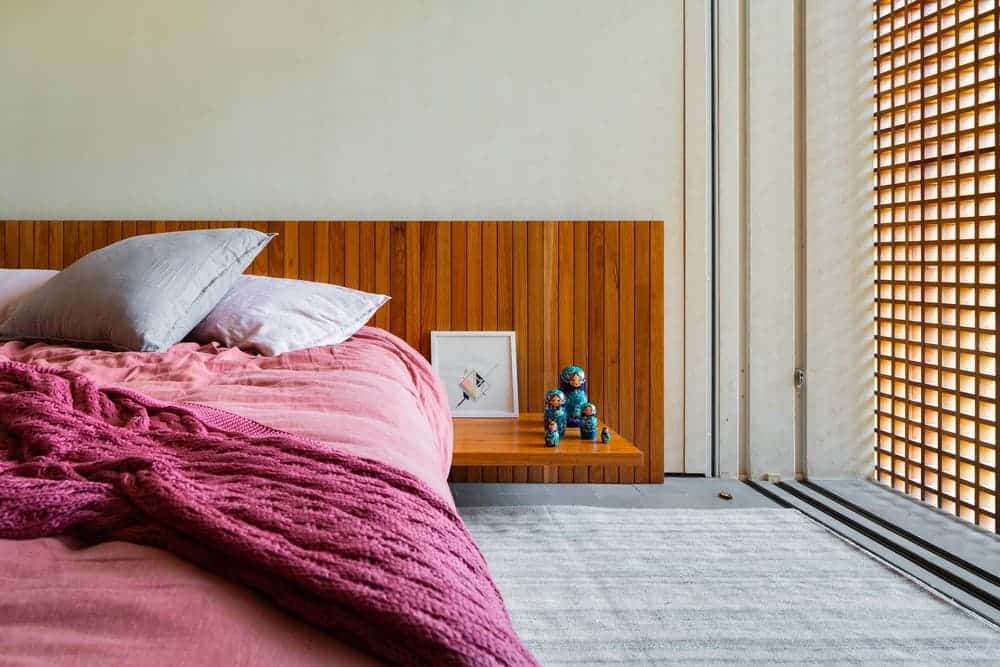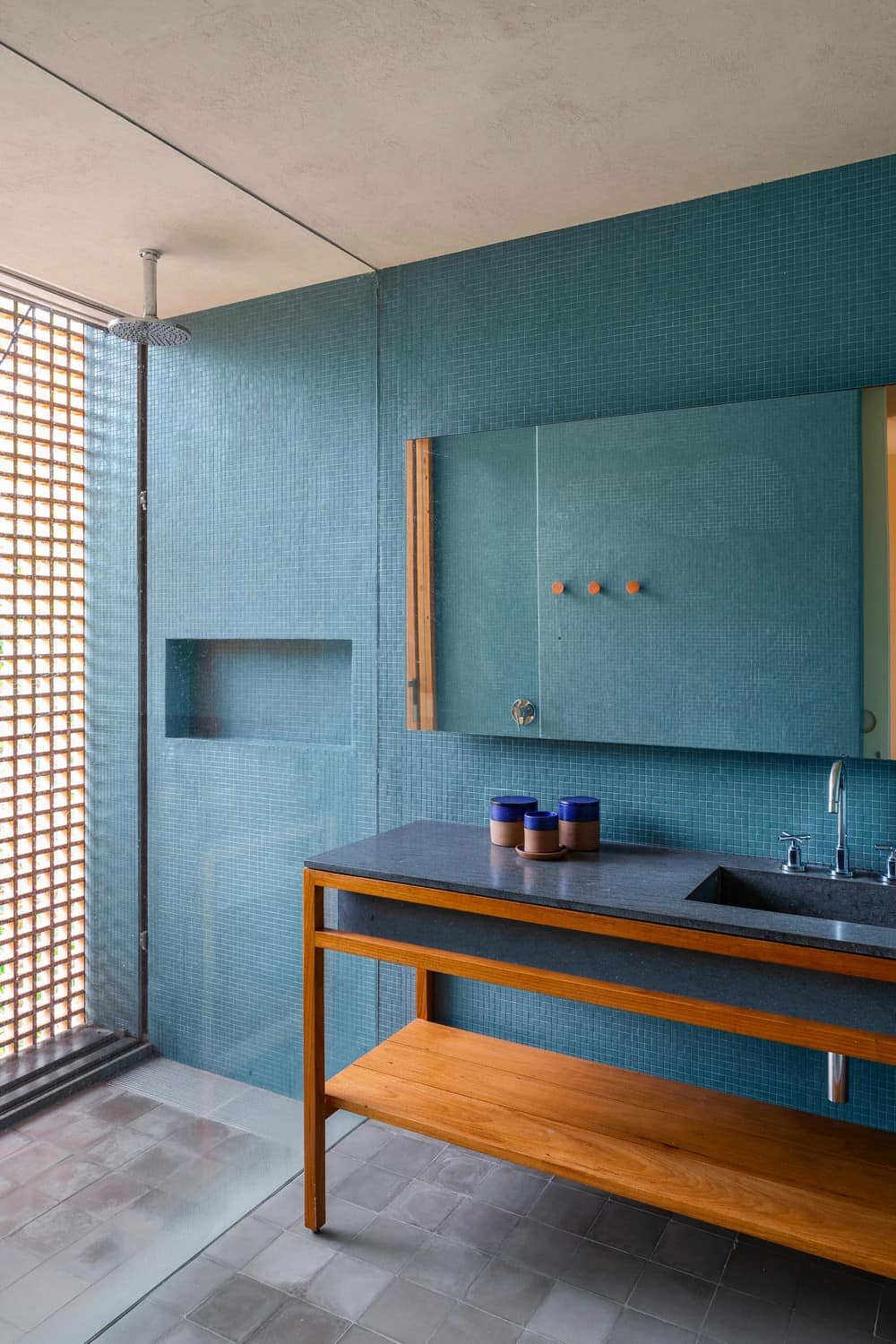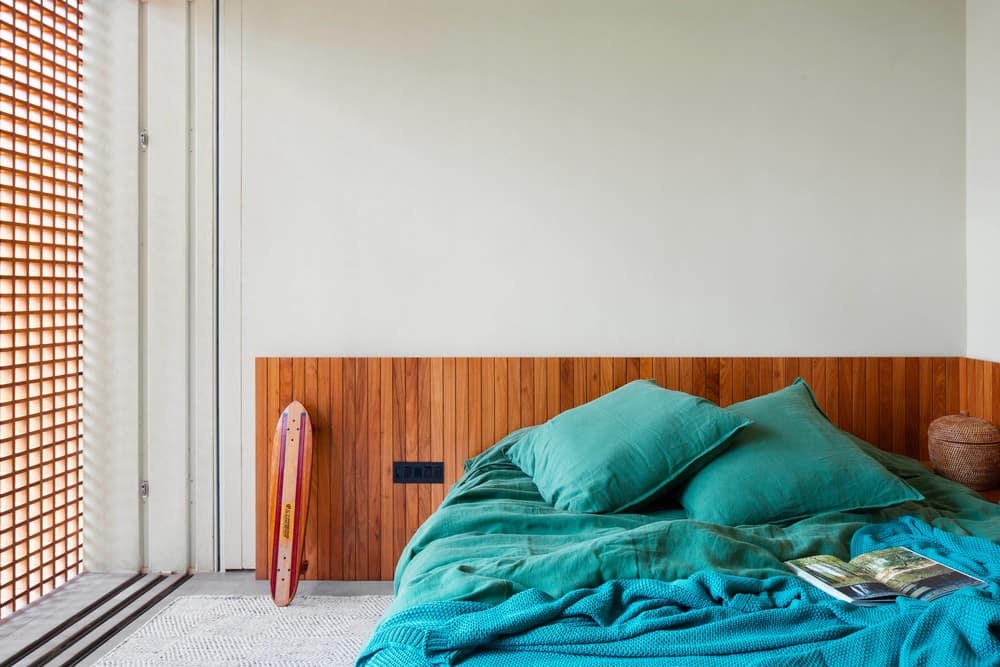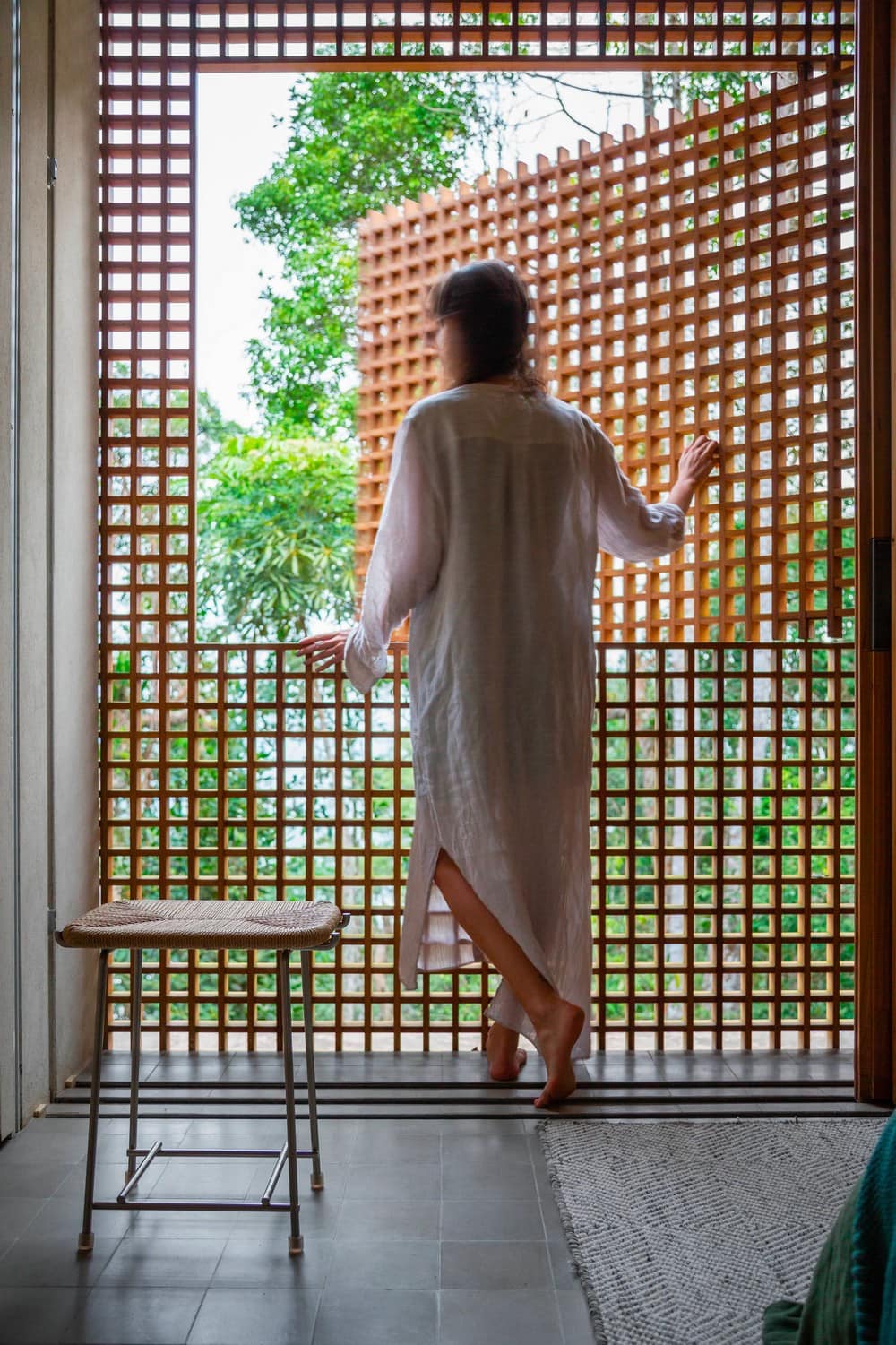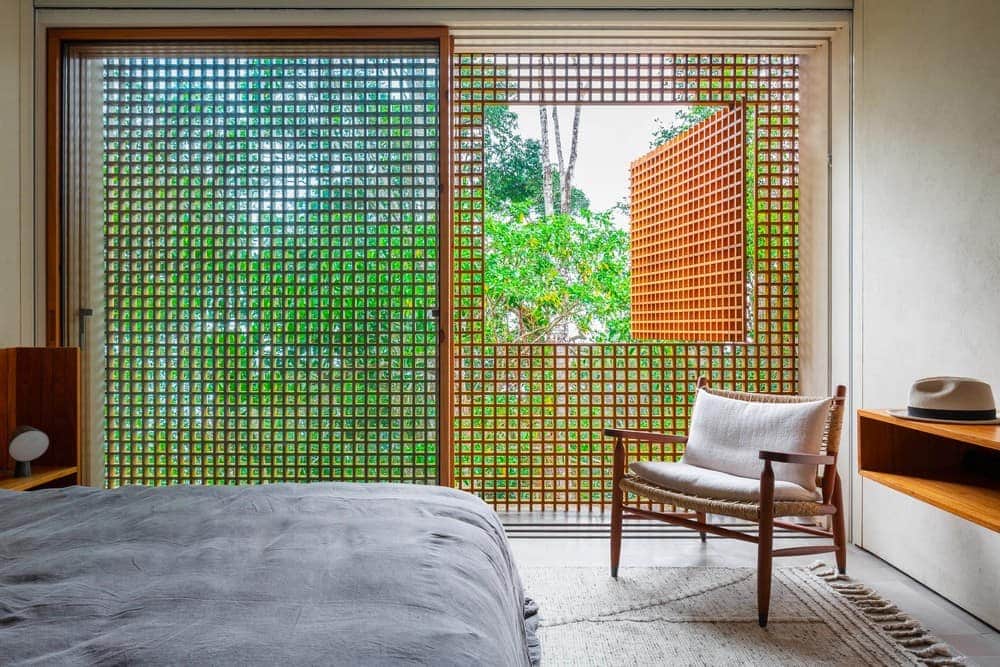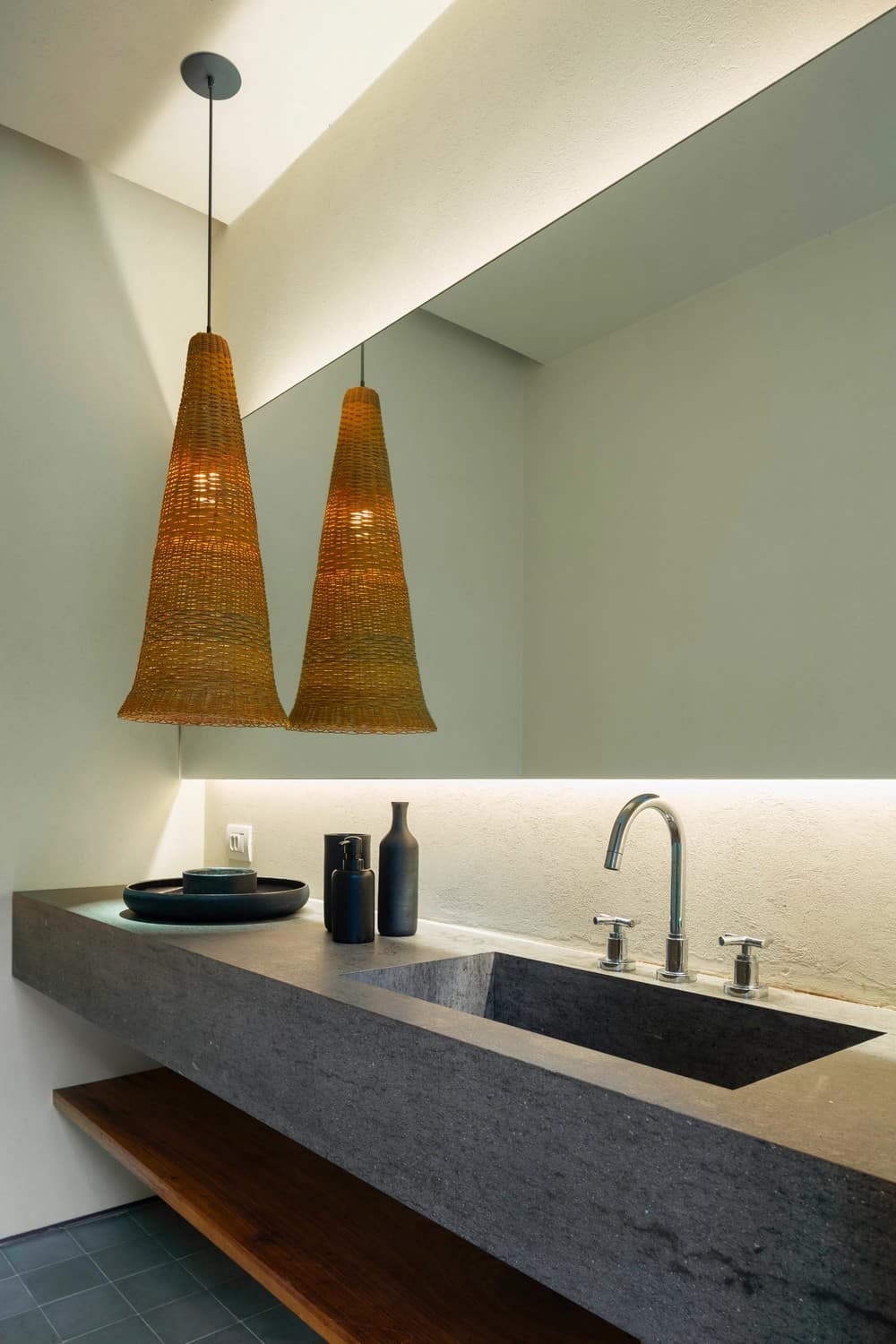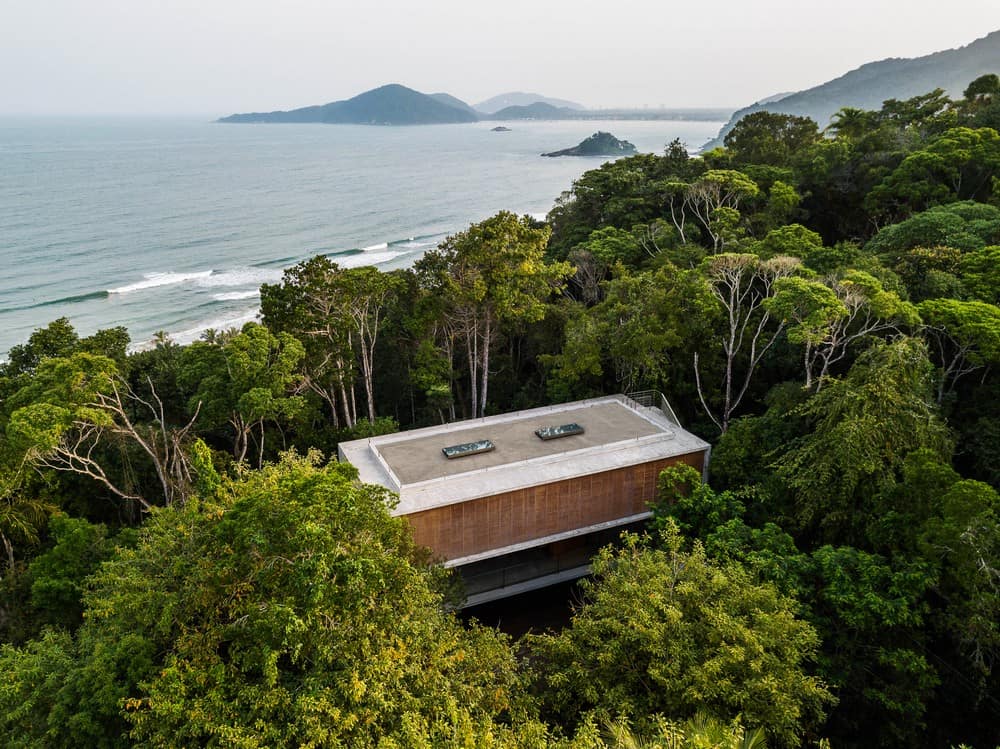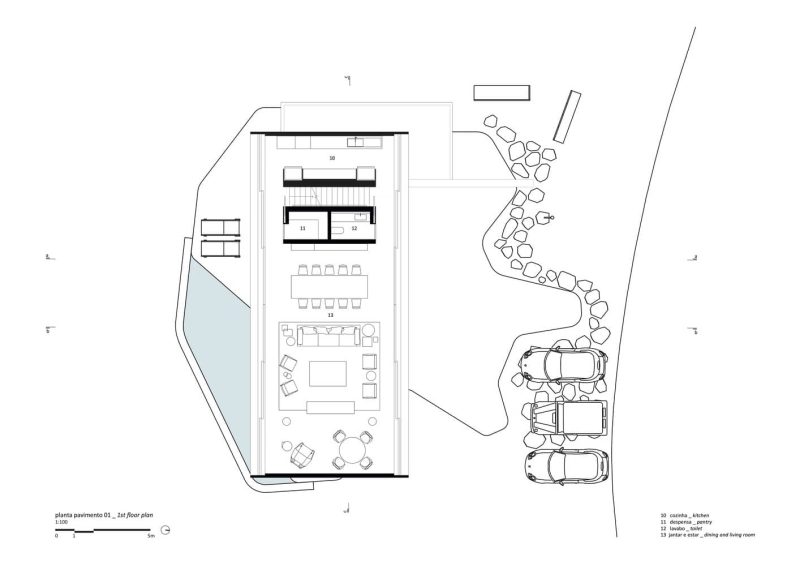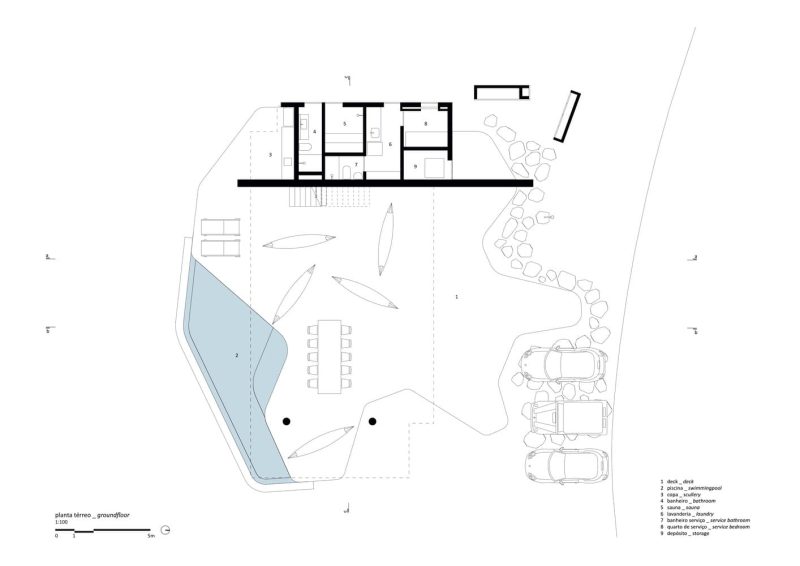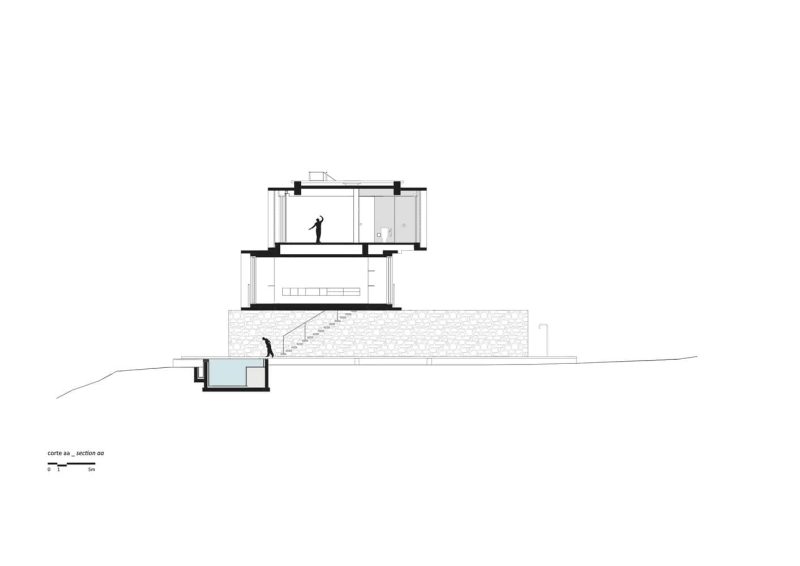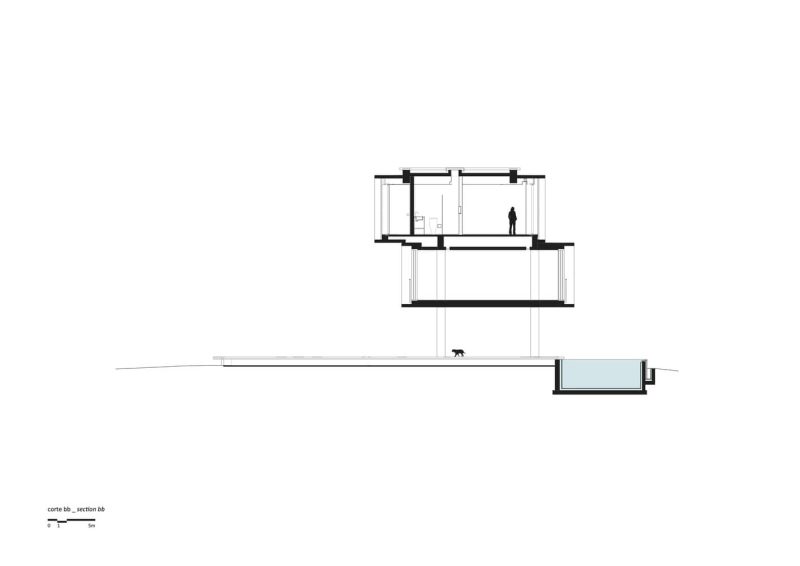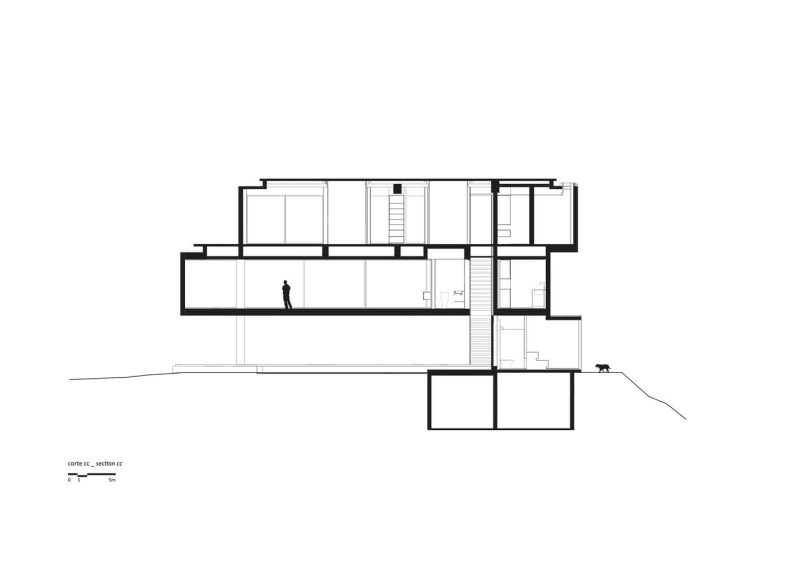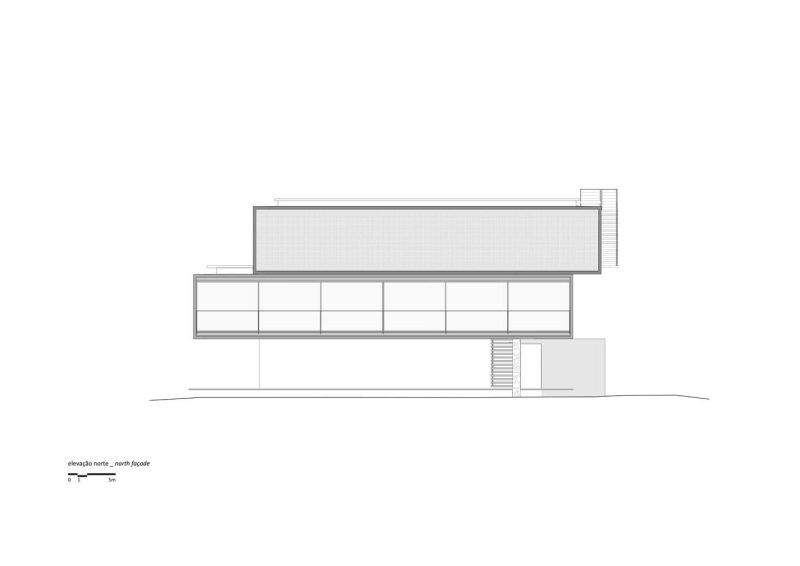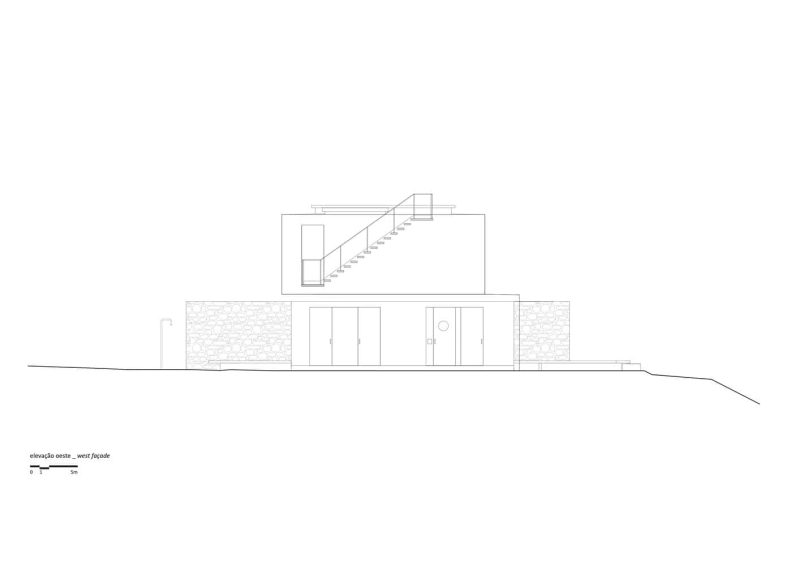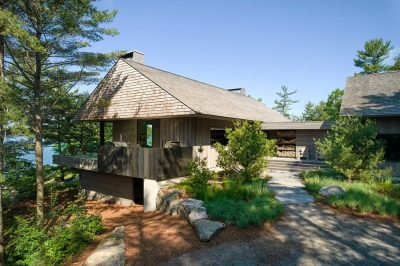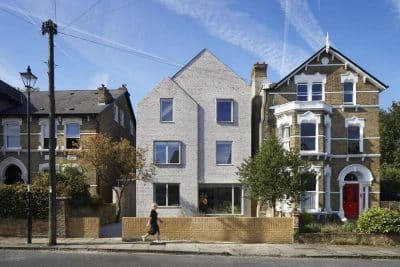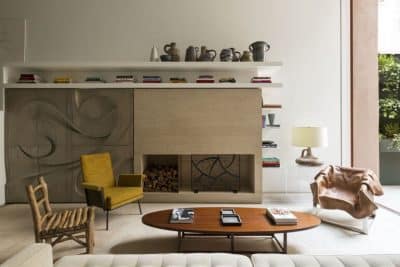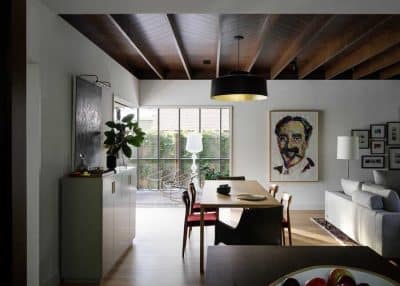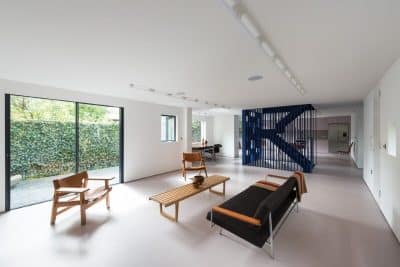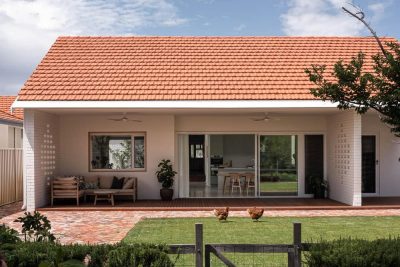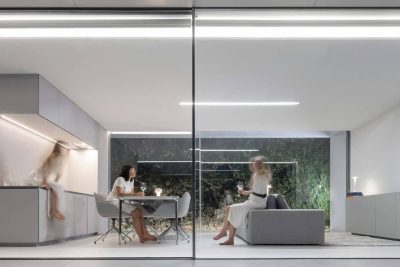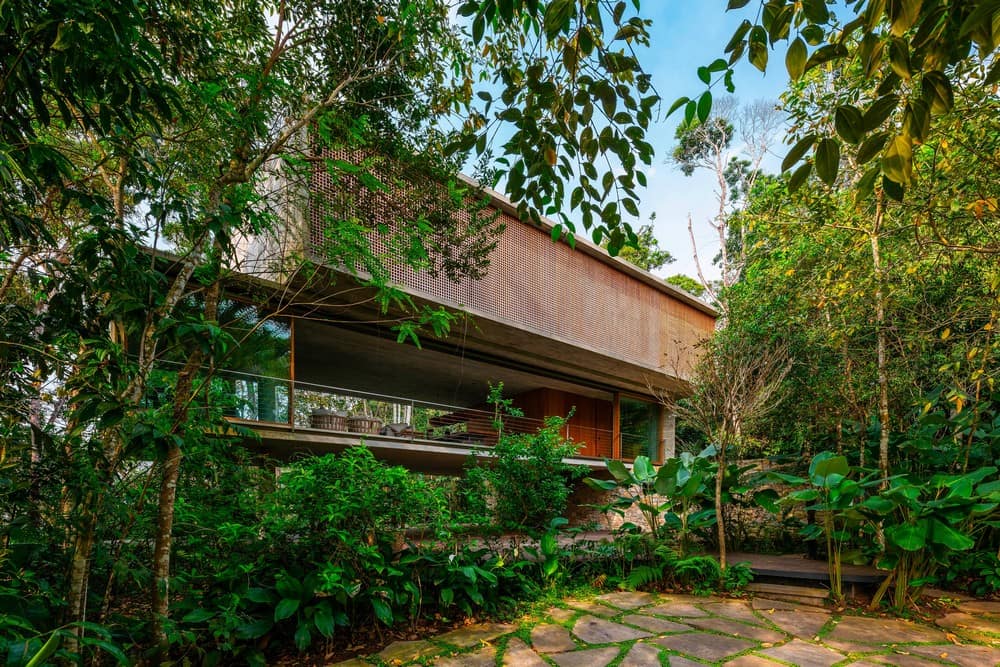
Project: Casa Azul
Architecture: Studio mk27
Lead Architect: Marcio Kogan
Co-author: Samanta Cafardo
Interior Design: Diana Radomysler
Landscape Design: Rodrigo Oliveira
Project team: Mariana Ruzante, Oswaldo Pessano, Ricardo Ariza
Contractor: Lock Engenharia
Location: Guarujá, Brazil
Area: 400 m2
Year: 2020
Photo Credits: André Scarpa
Casa Azul is located in Iporanga, Guarujá, on the coast of São Paulo, Brazil. Being inserted in an environmental preservation area of the Atlantic Forest, the residence designed by Studio MK27 obeyed the rules of environmental certification and conservation of the existing landscape.
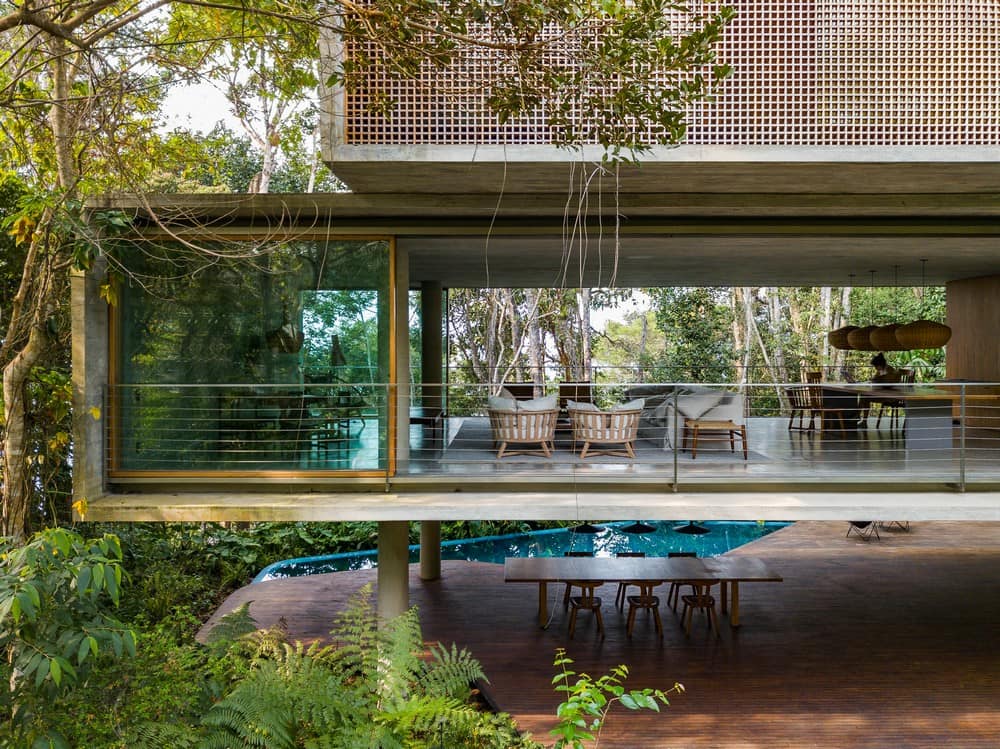
The areas of intervention were few, with the project implemented within an area previously delimited by environmental agencies, keeping the rest of the land untouched.
From the start, a perimeter of two meters was defined around the projection of the house to protect the forest from construction activities. The project should be implemented within an area previously delimited by environmental agencies, keeping the rest of the land untouched. It was then decided to raise the house on pilotis, generating a span of 15 meters long by 8 meters wide, which shades the main social and leisure area on the ground floor of the house.

This wooden deck, slightly raised from the ground to protect the pavement from moisture, blends in with the surrounding vegetation, sinuously extending beyond the building’s projection. Its abstract geometry, a tribute to the work of landscape architect Roberto Burle-Marx, intentionally contrasts with the rectangular volume that defines the house above and makes it possible to bring the vegetation either closer or further away, alternating the forms of interaction with the landscape.
The pool, partially protected by the shade, stands between the deck and nature, giving way to the landscaping created by Rodrigo Oliveira. By moving out of the projection of the house, the pool allows a more direct connection between the design of the house and the forest that extends towards the sea.
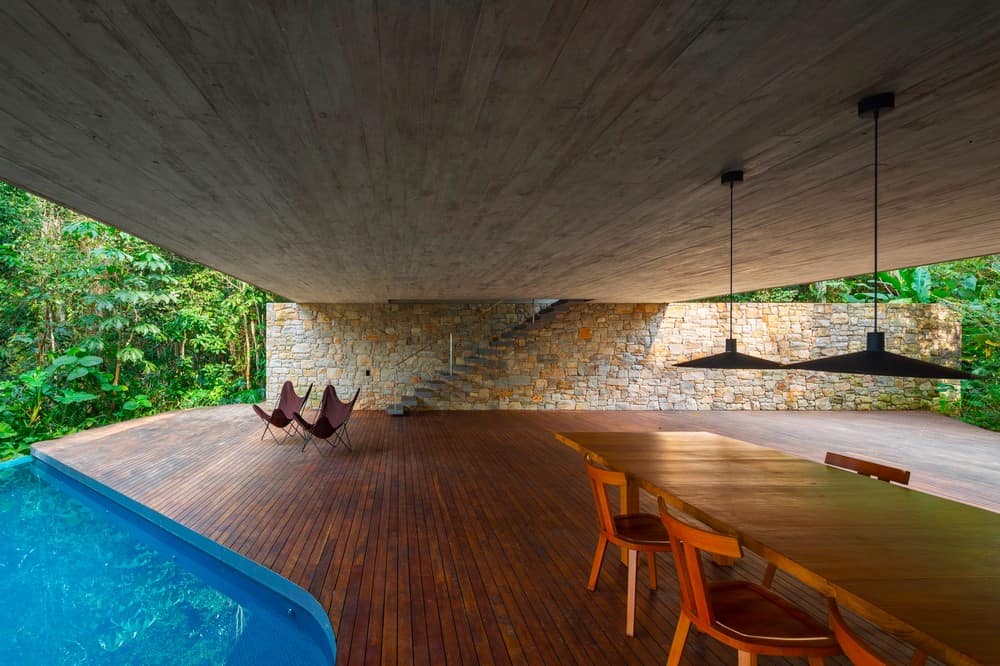
Perpendicular to the deck, a rustic stone wall separates the leisure area from the service areas and complements the pair of pillars that structure the span.
In the pool area, the landscaping prioritized a shaded garden integrated with the surrounding native vegetation, which extends beyond the residence, on the way to the sea.
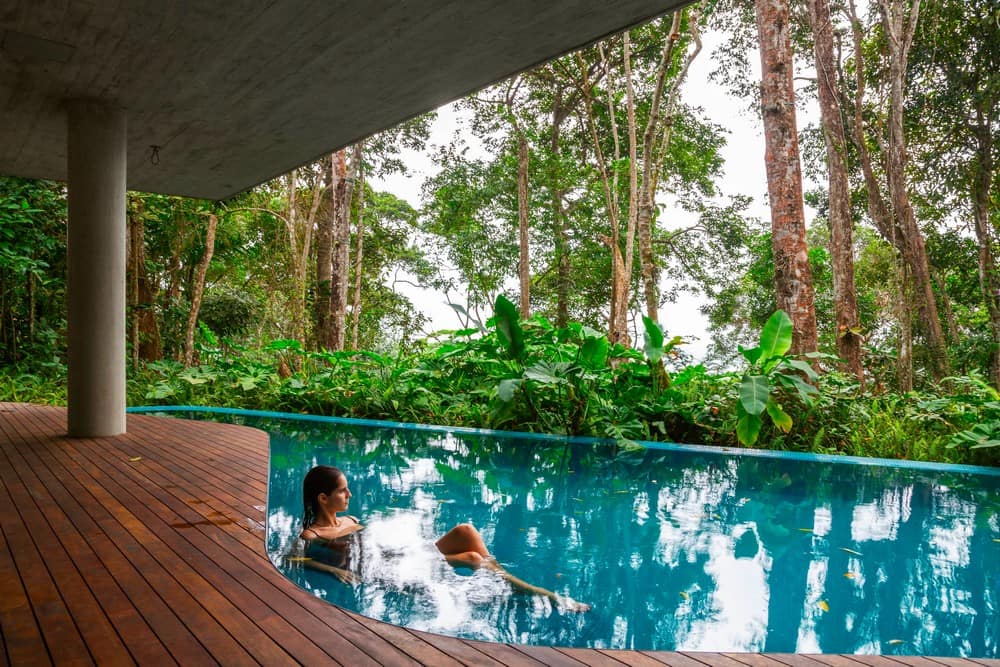
On the ground floor, two stacked and mismatched volumes seem to float amidst the treetops. The elevation of the volumes in Casa Azul is not only intended to shade and protect, but also to achieve the surrounding view. The first concrete box frames nature with its glazed sides and allows for a view of the sea. When opened, these panes of glass turn the room into a large veranda, consolidating the transparency that allows the gaze to completely traverse the architecture. In the same way, the program is openly resolved, integrating living and dining at this level.
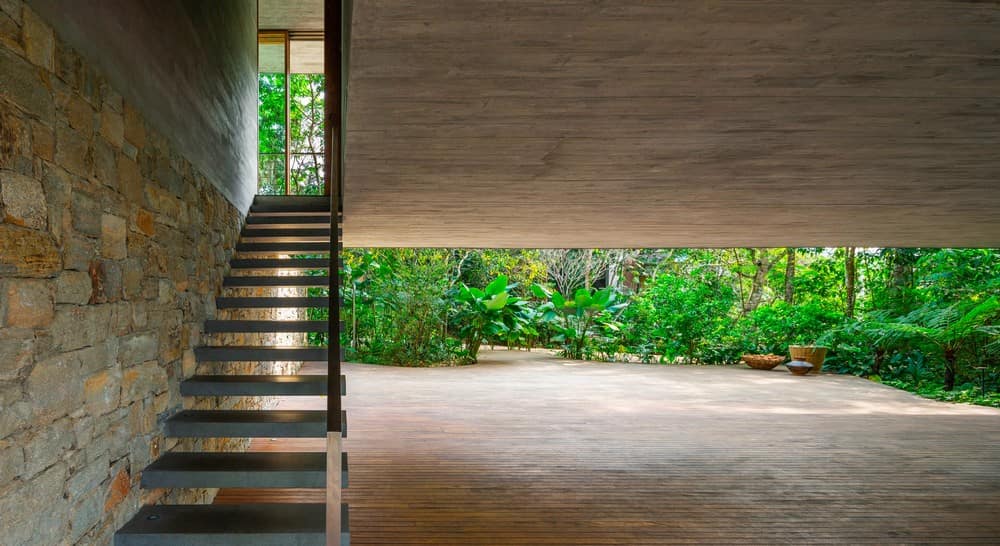
The second-floor houses four rooms immersed in the treetops. In this volume, the longitudinal faces are closed by wooden muxarabis, which gently filters the light. The wooden frames, fixed furniture, and decoration pieces, with natural textures and colors, bring the external nature into the house. The concrete volumes lend their tone to the floor tiles and stone countertops. On the ground floor, the floor of wide shards that leads to the entrance gradually breaks down and blends in with nature.
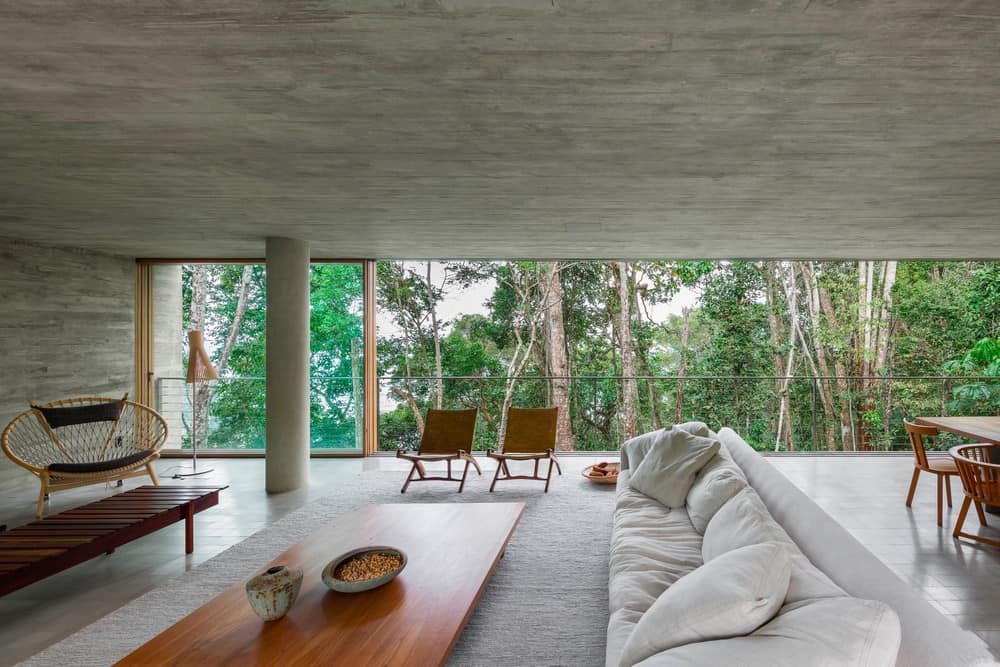
At Casa Azul, materiality is simple and discreet. The architecture lands smoothly on the ground, and the volumes open to the surroundings, diluting their presence. The game between the full and the empty makes the whole set light, and the house takes off. It is an architecture of naturalist modernism that emphasizes the exuberance of the surrounding environment, making it part of the house.
